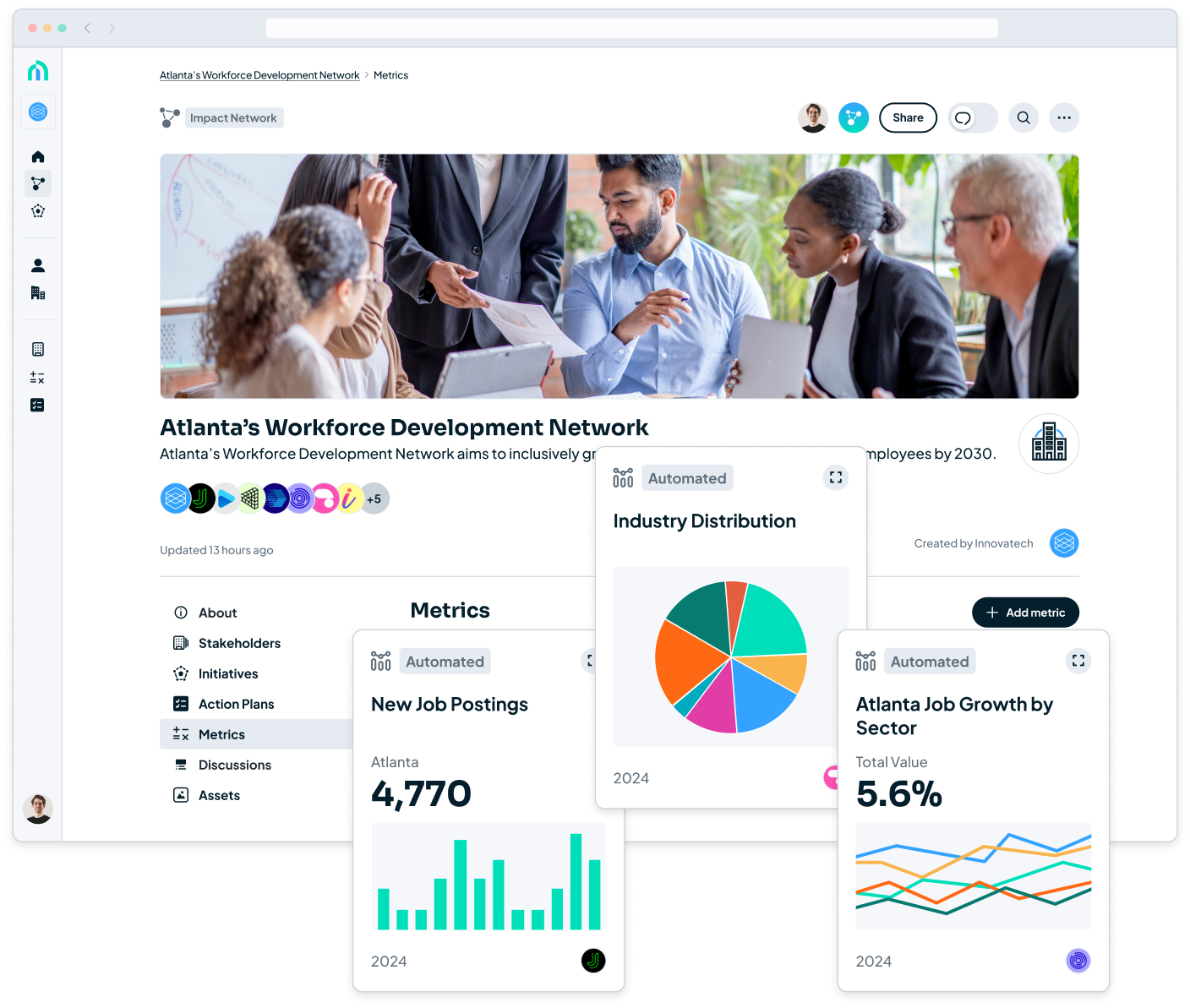Types of Outcome Measures
Desired business outcomes are one of the most important business concepts used to track performance. They are objective, measurable goals or common process measures that a business has set to achieve within a specific framework or time period.
So, why are outcome measures important? Why should your business consider using them, and how can they benefit you in the long run?
First and most importantly, outcomes are the key deliverables by which two businesses working together can define value and measure success. In other words, they help businesses quantify their success—or lack thereof—across a set of clear parameters. Outcome measures are the most effective way for a business to gauge its performance and gain insight into where it could improve.
While other methods of measurement may provide hints or clues about certain processes within a business, outcome measures are the only way to truly get a sense of whether or not that business is hitting its key goals. This is because they are based on data and metrics that can’t be as easily misinterpreted or falsified as more subjective means of evaluation.
There are multiple different types of outcome measures depending on your company’s desired objectives. Sometimes it’s helpful to draw out a roadmap for your business in order to get a clearer picture of what sorts of measures you should be focusing on at a given point in time.
Outcome Measures Examples
Outcome measure examples can be found throughout the business world in various industries.
- Process Measures Examples: Process measures track the steps that lead to the desired outcome. For instance, process measures could be used to ensure that inventory for a retail company is moving along the pipeline in an appropriate and orderly fashion. Essentially, businesses use these types of measures to determine whether current processes are working and if they’re ultimately getting them closer to where they want to be. If not, reassessment is needed.
- Structure, Process Outcome Examples: Structure and process outcomes are often used in healthcare settings. “Structure” refers to a system’s resources and infrastructure used to help patients, and “process” is used to denote the specific actions providers take to meet their patients’ needs. These, in turn, make up the whole of an “outcome” that contains all aspects of a health system, including behavior and health-related quality of life.
- Functional Outcome Measures Examples: Like structure/process outcomes, functional outcomes are typically used in the medical field. They’re used to quantify a person’s performance of certain physical tasks, and can give clinicians a better understanding of how well a patient’s treatment has aided their ability to function in the “real world.” There are a wide array of outcome measures examples, and they vary based on the patient’s reason for treatment A physical therapist might use functional outcome measures to test a patient’s walking or balancing ability.
- Primary Outcome Measure Example: The primary outcome measure is considered to be the most important factor in a study. In marketing, for example, researchers may conduct a study looking at the variables involved in the way customers interact with their brand, but the main thing they’re focused on is how customers behave on their website. The primary outcome measure may be time spent on a certain page, or what percent of website visitors click to add to cart. This would be their primary outcome measure.
Health Outcomes Examples
Across the healthcare industry, there has been a shift from volume to value, where healthcare suppliers, providers, systems, employers, and payers are aligning their economic interests to work together on positive patient outcomes.
Why are outcome measures important in healthcare? Health outcome measures are important because they help improve the healthcare system. By looking at various objectives and outcomes, providers can see where there are issues and how they can be fixed, which is a major importance of outcome measures in healthcare. Health outcomes examples may include factors such as mortality, patient experience, timeliness of care, and efficient use of medical imaging.
Process measures in healthcare look at the steps a provider has taken to treat or improve patient health. In essence, they’re used to determine which processes were followed and whether or not they ultimately led to a desired outcome—if not, providers are able to reassess methods. The number of times a certain test was performed for a particular patient or population, such as blood pressure testing for diabetics, is an example of a process measure.
In addition to patients’ physical health benefiting from outcome measurement tools, mental health systems are improved through these tools as well. Outcome measurement tools in healthcare have a broad range of uses. Disease-specific outcome measures, as the term implies, refer to a set of healthcare outcomes-focused specifically around a certain disease or condition. They’re particularly useful in targeting niche demographics and often involve the use of surveys or questionnaires to assess patient wellbeing.
These are similar to the quality of life outcome measures, which track a spectrum of multifaceted patient health over time. Outcome measures in clinical trials are used to test and measure the effectiveness of various clinical trials in patient outcomes.
There are many examples of outcome measures in healthcare including:
- The average cost of care
- Mortality rate
- Readmittance rate
- Patient pain ratings
By aligning outcome measures across the board, healthcare systems and providers can gain a better understanding of where their shared objectives are being met, and where there’s still room for improvement. At the end of the day, regardless of their specific practice or system in place, clinicians want to ensure that they’re providing the highest
quality care to patients. This is why outcome measures are so important in healthcare and why it’s critical that providers are able to align their interests where possible and strive towards a common set of goals and objectives.
Outcome Measures Physiotherapy
Within the healthcare system, physiotherapy is an area that commonly uses various outcome measures to assess patient health and wellbeing. By utilizing functional outcome measures, physical therapy can provide a more holistic experience for patients.
But why are outcome measures important in occupational therapy and physiotherapy? To understand the importance of outcome measures in physiotherapy, it’s important to realize that the highest quality care can only be achieved when their progress is being tracked and assessed. Healthcare providers need to be aware of what is working and what isn’t, and if a patient’s condition is improving according to plan or not. For this reason, the importance of outcome measures in physiotherapy cannot be overstated.
There are four main types of outcome measures in physiotherapy: self-reported measures, performance-based measures, observer-reported measures, and clinician-reported measures.
- Self-Reported Measures: Self-reported measures are based on a patient’s self-assessment of their own condition, usually through a questionnaire.
- Performance-Based Measures: Performance-based measures highlight a patient’s ability to perform a set of movements or tasks. They can measure either objective or qualitative factors that affect a patient’s treatment plan.
- Observer-Reported Measures: In contrast to self-reported measures, observer-reported measures are completed by a third party that regularly observes the patient, rather than by the patient or the clinician themselves.
- Clinician-Reported Measures: Clinician-reported measures are taken by healthcare professionals. They use a set of clinical tools and measurements to assess patient wellbeing.
Rehabilitation outcome measures are a subset of outcome measures in physiotherapy. These are specifically designed to measure and assess patient treatment goals through all phases of the rehabilitation process. By using outcome measures, physiotherapy and the processes by which patients are treated and recover are enhanced. This is because clinicians are able to get a better idea of how progress is being made—and if not, how they can set things back on course.
What are Outcome Measures in Research?
What is an outcome in research? Let’s take a look at outcomes in research, and dive into the answer to “what are outcome measures in research?”
In research, an outcome measure is a baseline that is used to test the effect of a treatment or intervention. There are various types of outcome measures in research that are used depending on the industry and desired end goal of the study in question.
One is a primary outcome. So, what is a primary outcome in research? The primary
outcome is the factor that the researcher considers paramount in the study. Nothing holds greater relevance than the primary outcome, and so this is the variable that researchers measure against everything else.
With outcomes measures, research becomes testable and measurable in a much more holistic manner. One outcome measures in research example might be the number of patients that enroll in a particular study. Outcome measures in qualitative research use qualitative methods to assess outcomes and plan roadmaps for future courses of action. They rely on data obtained via questionnaires, observation, interviews, and other sources taken from an experiential context.
Further examples of outcome measures in research may include factors such as the number of patients that died during surgery, or different types of medication that were prescribed to a certain demographic. Researchers would then take this information and use it to determine whether their current methods were working, and what might need to be changed based on the effects associated with the variables tested.








